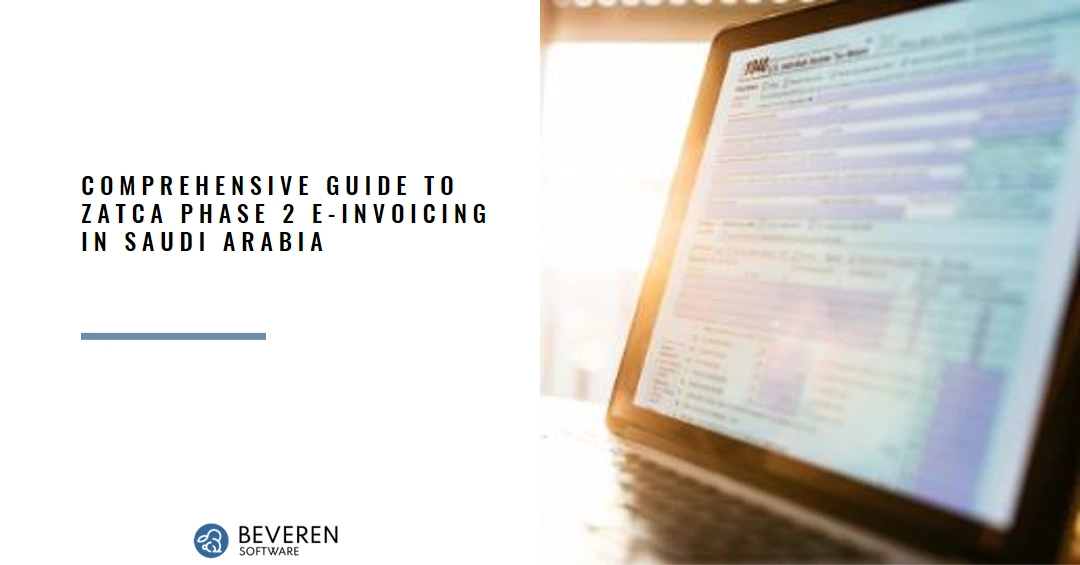In the ever-evolving landscape of digital transformation, the Kingdom of Saudi Arabia takes another leap forward with the implementation of Phase 2 of the ZATCA (Zakat, Tax, and Customs Authority) E-Invoicing initiative. This excerpt focuses on the role of ERPNext in streamlining electronic invoicing processes, offering businesses a comprehensive solution to navigate the intricacies of ZATCA Phase 2 seamlessly.
As businesses adapt to the evolving regulatory framework, ERPNext emerges as a powerful tool for organizations looking to enhance their invoicing practices. This guide illuminates the symbiotic relationship between ERPNext and ZATCA Phase 2, providing practical insights into how businesses can leverage the ERP system to align with regulatory requirements, ensure compliance, and optimize their invoicing workflows.
As Saudi Arabia continues its digital transformation journey, the second phase of the ZATCA (Zakat, Tax, and Customs Authority) E-Invoicing initiative emerges as a pivotal milestone. This comprehensive guide aims to navigate businesses through the intricacies of Phase 2, providing invaluable insights into the electronic invoicing landscape in the Kingdom.
The ZATCA Phase 2 E-Invoicing system builds upon the success of its predecessor, enhancing efficiency, transparency, and compliance in the realm of financial transactions. This guide delves into the key components of the Phase 2 implementation, unraveling the technical nuances, legal requirements, and practical considerations that businesses need to embrace for seamless adoption.
In the ever-evolving landscape of digital transformation, the Kingdom of Saudi Arabia (KSA) has taken significant strides towards modernizing its invoicing systems through the Saudi Arabian Tax Authority (ZATCA). With the introduction of e-invoicing, businesses are faced with the challenge of Zatca phase 2 integration of multiple stores to comply with Phase 2 of the KSA e-Invoicing system. This article delves into the intricacies of this integration process, outlining steps, benefits, challenges, and best practices for seamless implementation. Introduction to ZATCA and KSA e-Invoicing ZATCA, the regulatory body overseeing taxation in Saudi Arabia, introduced the KSA e-Invoicing system to digitize and streamline invoicing processes. Phase 1 of the implementation mandated large businesses to adopt electronic invoicing. Phase 2 expands this requirement to include medium and small-sized enterprises (SMEs), necessitating the integration of multiple stores to facilitate compliance. Understanding ZATCA Phase 2 Integration Explanation of Phase 2 Phase 2 of KSA e-Invoicing extends the scope of electronic invoicing to encompass SMEs, marking a significant milestone in the country’s digital transformation journey. It aims to enhance transparency, reduce tax evasion, and improve overall efficiency in financial transactions. Importance of Integration for Multiple Stores For businesses operating multiple stores, integrating with ZATCA is paramount to ensure compliance with Phase 2 regulations. Failure to integrate can result in penalties, operational disruptions, and reputational damage. Integrating Multiple Stores with ZATCA for Phase 2 Implementation Requirements for Integration Before embarking on the integration process, businesses must ensure they meet the necessary requirements set forth by ZATCA. This includes having a valid Tax Identification Number (TIN) and adopting compatible invoicing software. Steps to Integrate with ZATCA Benefits of Integration Streamlined Invoicing Process Integration with ZATCA streamlines the invoicing process, reducing manual errors and expediting transactional workflows. Compliance with Regulations By integrating with ZATCA, businesses ensure compliance with Phase 2 regulations, mitigating the risk of non-compliance penalties. Enhanced Efficiency and Accuracy Automated invoicing processes enhance efficiency and accuracy, enabling businesses to focus on core operations rather than administrative tasks. Challenges and Solutions Common Challenges Faced Integration challenges may include data synchronization issues, software compatibility issues, and staff training requirements. Solutions to Overcome Integration Challenges Engaging with experienced software providers, conducting comprehensive training sessions, and implementing robust data management protocols can help overcome integration challenges. Best Practices for Seamless Integration Utilizing Reliable Software Solutions Investing in reliable software solutions with a proven track record of successful integration can streamline the implementation process. Training and Support for Staff Providing comprehensive training and ongoing support to staff members ensures smooth adoption and utilization of integrated systems. Future Outlook and Adaptation Anticipating future changes in regulatory requirements and continuously adapting integration processes is crucial for long-term compliance and efficiency. Conclusion Integration with ZATCA for Phase 2 implementation of KSA e-Invoicing is a critical step for businesses operating multiple stores in Saudi Arabia. By understanding the requirements, overcoming challenges, and adopting best practices, businesses can streamline their invoicing processes, ensure compliance, and position themselves for future success in the digital economy. FAQs Non-compliance may result in penalties, operational disruptions, and damage to the reputation of the business. Businesses should conduct a thorough assessment of their systems and engage with software providers offering solutions tailored to ZATCA’s specifications. Comprehensive staff training is essential to ensure smooth adoption and utilization of integrated systems, minimizing disruptions and maximizing efficiency. While possible, switching software providers post-integration may entail additional costs and complexities. It’s advisable to choose a reliable provider from the outset. Regularly monitoring updates from ZATCA and engaging with industry associations can help businesses stay informed about evolving regulations and adapt their processes accordingly.




